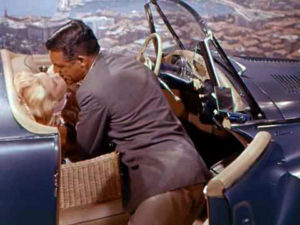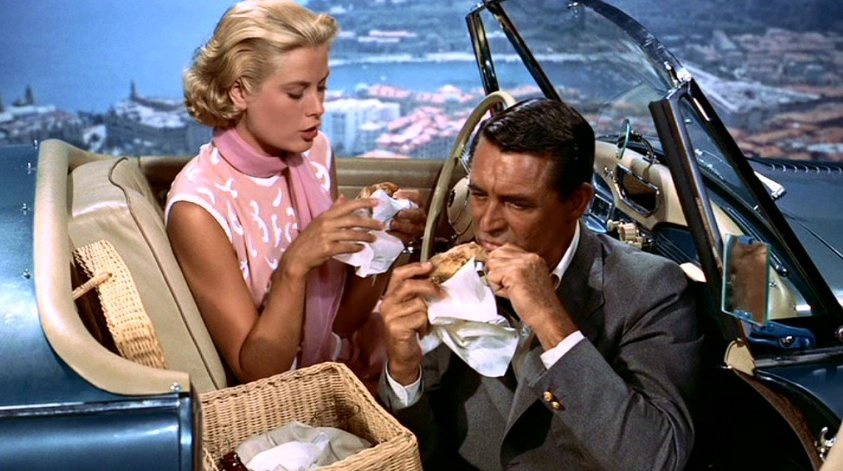David Dodge and Alfred Hitchcock had differing views on the character of John Robie, aka The Cat, and the hero of To Catch a Thief. Dodge disguised the thirty-four-year-old to look older and plumper; for his film, Hitchcock chose fifty-one-year-old Cary Grant to play the role. Grant was neither thirty-four nor plump in 1955, but who cares.
There isn’t a picnic in David Dodge’s To Catch a Thief, and John Robie doesn’t eat fried chicken with “Francie” Stevens. But Hitchcock wanted action and local color, so he invented a reckless motorcar ride that ends with a picnic at which Stevens attempts to seduce Robie. It’s pure Hitchcock with sparkling dialog by John Michael Hayes.
Robie has nerves of steel, but Stevens’ driving unravels him. However, once he catches his breath, the picnic conversation fairly seethes with sexual innuendo. As he stretches his legs, Stevens offers Robie some chicken, “Do you want a leg or a breast?” Delicately sensing the innuendo, Robie answers, “You make a choice.” Some regard this as sophisticated erotic banter; whatever, it’s prime sexual innuendo. But when Francis gives him a leg, he eats so daintily that it might as well be made of nitroglycerine.

Featured Image: Francis Stevens (Grace Kelly) and John Robie (Cary Grant) picnic in her Sunbeam Alpine.
See Alfred Hitchcock. To Catch a Thief (1955). Screenplay by John Michael Hayes based on David Dodge’s novel (1952); David Dodge. To Catch a Thief. New York: Random House, 1952; Hilary Radner. “To Catch a Thief: Light Reading on a Dark Topic,” in Hitchcock at the Source: The Auteur as Adapter, edited by R. Barton Palmer and David Boyd. Albany, New York: SUNY Press, 2013

